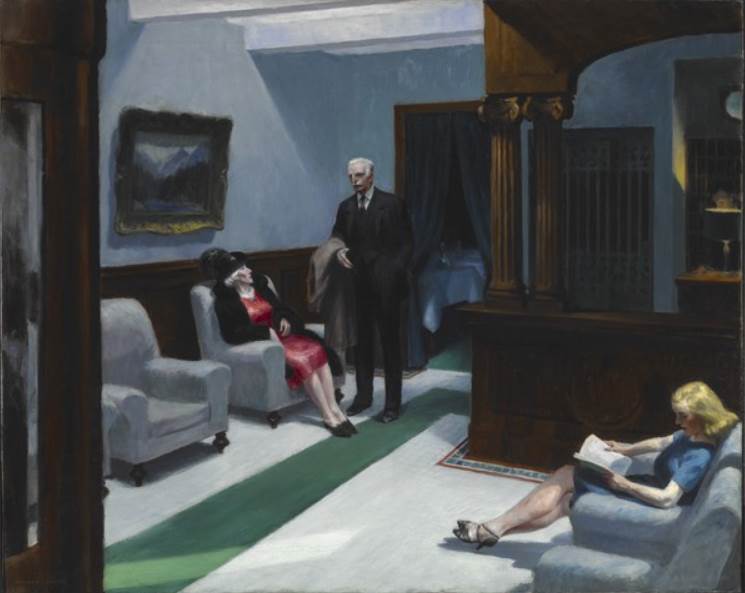One of the oldest and largest art museums in the United States is located in a magnificent nature park just north of downtown Indianapolis.
The Indianapolis Museum of Art (IMA) or “Newfields” was established in 1883 as the “Art Association of Indianapolis” and featured 453 artworks from 137 artists at the time.
The first permanent museum, however, wasn’t opened until 1906 as a part of the John Herron Art Institute. The museum was only renamed to its current name in 1969.
This was shortly before the permanent collection of the museum was moved to its current location in 1970.
Today, the IMA has a collection of over 54,000 artworks, many of which are on display in the exhibition space that covers an area of 62,197.1 square meters (669,484 square feet).
In this article, you’ll discover some of the most famous paintings at the Indianapolis Museum of Art.
1. The Crucifixion – Lucas Cranach the Elder
- Date created: 1532
- Dimensions: 76 × 55 centimeters (30 × 21.5 inches)
The Crucifixion is a painting by German artist Lucas Cranach the Elder (1472-1553), one of the greatest Renaissance artists in the northern part of Europe. He produced many versions of this subject during his long career and the painting at the Indianapolis Museum of Art is one of the most notable ones.
The crosses are surrounded by people and we can distinguish the Virgin Mary, who is being held by John the Evangelist to Jesus’ right, and Mary Magdalene who is holding onto the cross. The Good Thief watches Jesus while the Impenitent Thief is depicted as bald and fat.
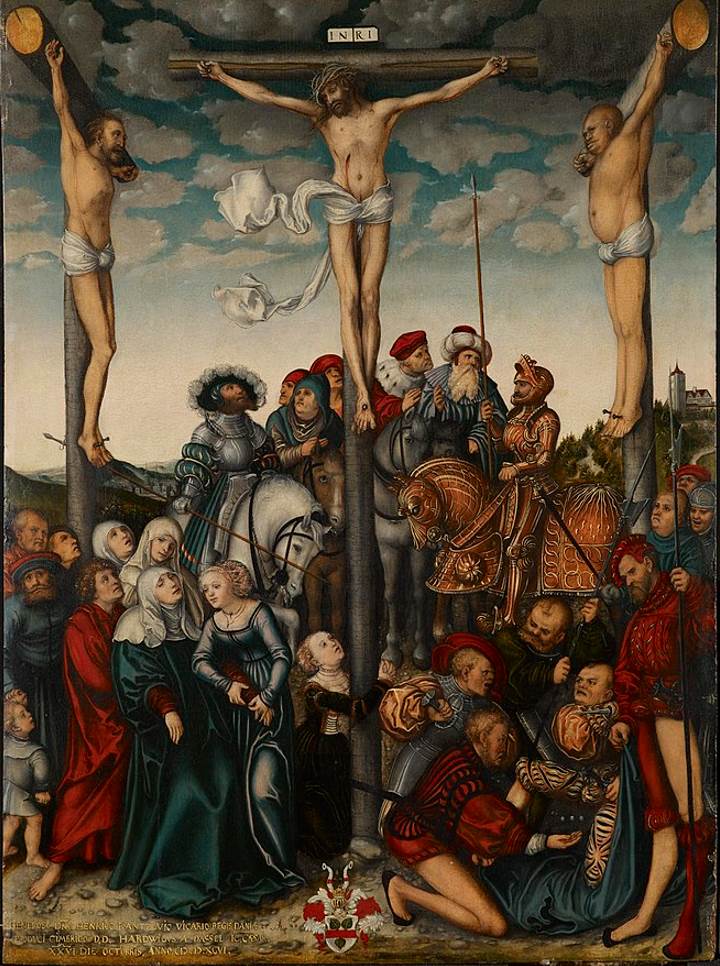
2. Entry of Christ into Jerusalem – Anthony van Dyck
- Date created: 1617
- Dimensions: 151 × 229.2 centimeters (59.5 x 90.25 inches)
Entry of Christ into Jerusalem is a monumental work of art by the Flemish artist Anthony van Dyck (1599-1641). It depicts a popular story in the history of art which is Jesus entering Jerusalem. This event marks the beginning of the Passion of Jesus Christ and is commemorated on Palm Sunday.
The painting is a rather accurate depiction of the vent in which Jesus enters the city while riding a donkey. The drama and use of warm colors are typical of Baroque paintings. What’s amazing is that Anthony van Dyck was only 18 years old when he completed this work, a prelude to a successful career that led him to Italy and England in the following decades.
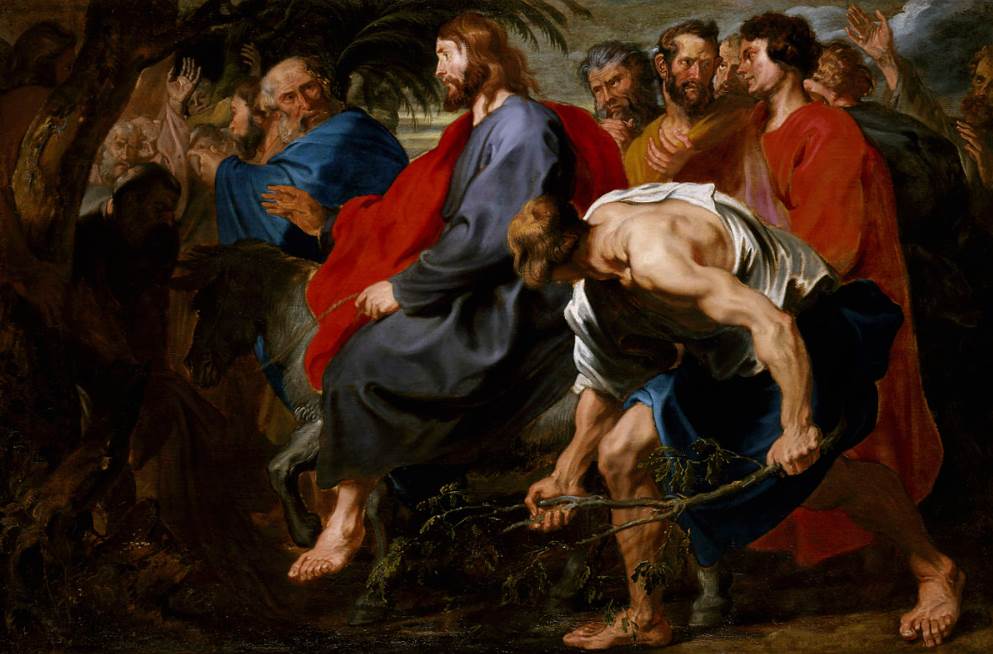
3. Self-Portrait – Rembrandt van Rijn
- Date created: 1629
- Dimensions: 44 × 34 centimeters (17.5 × 13.5 inches)
Rembrandt van Rijn (1606-1669) was a Dutch artist who is considered to be one of the greatest artists to have ever lived. He produced nearly 80 self-portraits of which over 40 were oil paintings. They serve as an autobiography that reflects the different periods in his life.
What’s fascinating about the Self-Portrait at the Indianapolis Museum of Art is that it was one of the first he completed, possibly even the first in Rembrandt’s oeuvre. He completed this work in 1929 which means that he was only 23 years old at the time and still living and working in his native Leiden.
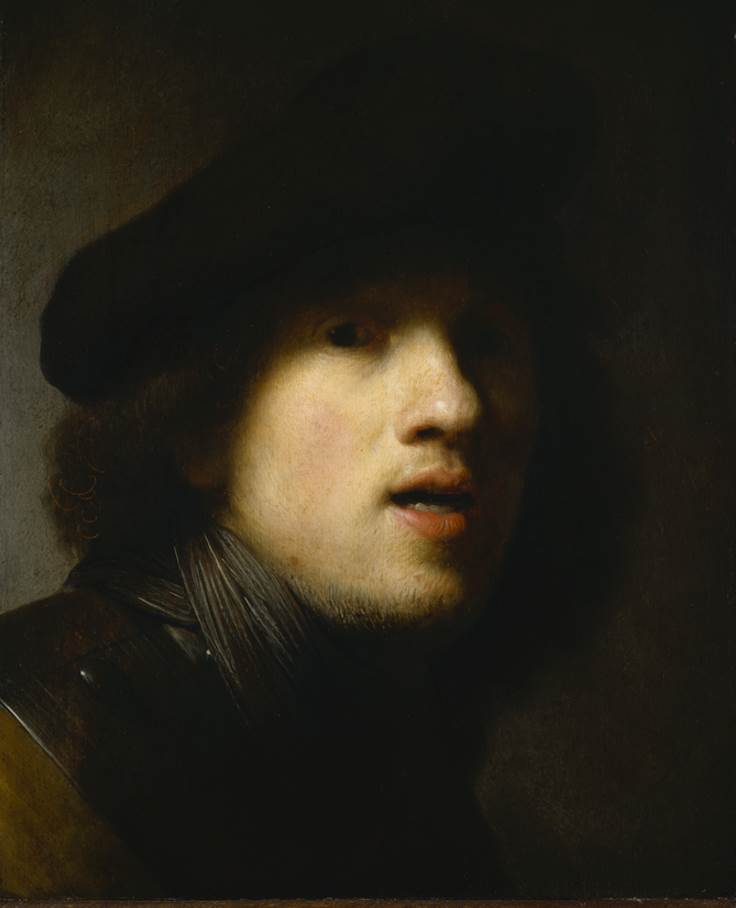
4. The Fifth Plague of Egypt – J.M.W. Turner
- Date created: 1800
- Dimensions: 120 × 180 centimeters (48 × 72 inches)
The Fifth Plague of Egypt is a painting by J.M.W. Turner (1775-1851), the eccentric English artist who became one of the leading painters of the Romantic era. It’s one of the early works by the artist, just 4 years after he completed his first major oil painting titled “Fishermen at Sea” (1796).
The title of the painting isn’t reflective of what is being depicted. We can see the curse of hail and fire being cast on the Egyptians by Moses, which was the Seventh Plague according to the Book of Exodus. It was one of Turner’s first works that integrated the dramatic sky that made him famous in later years.

5. Peasant with a Wheelbarrow – Jean-François Millet
- Date created: 1848-1852
- Dimensions: 37.78 × 45.4 centimeters (14.87 × 17.87 inches)
Peasant with a Wheelbarrow is a painting by Millet (1814-1875), one o the founders of the Barbizon School of painting in France. The French artist started painting this work when he was still living in Paris in 1848 but only completed it when he found a buyer in 1852.
Jean-François Millet produced some of the most notable Realism paintings in the 19th century, often depicting peasants doing hard labor in the fields around the small town of Barbizon. He became extremely successful because of the quality of his works, something of which you can see glimpses in this relatively small work of art.
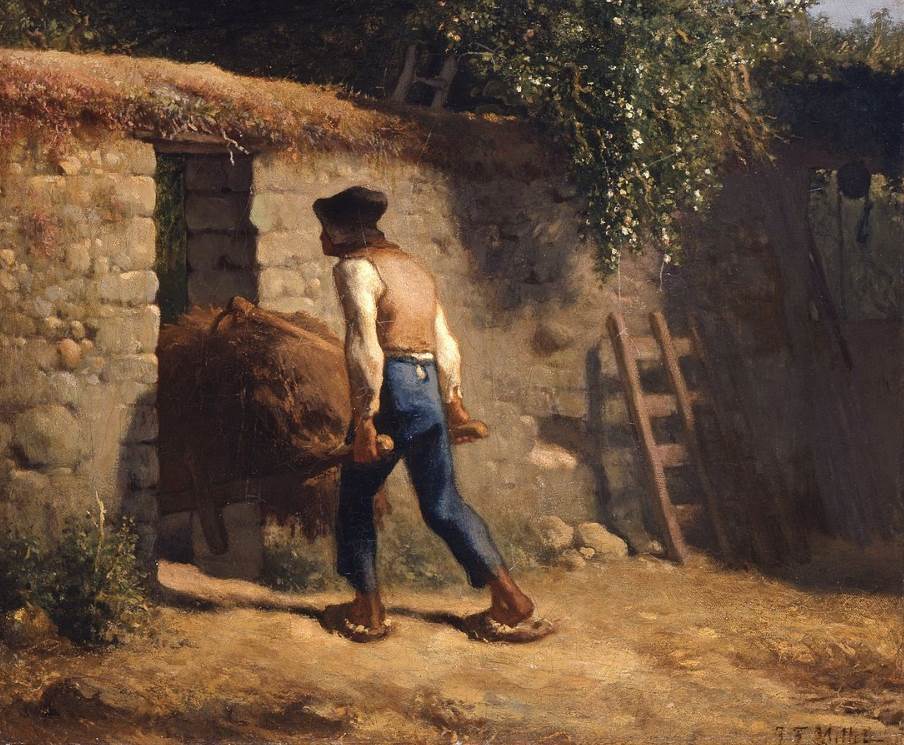
6. The Rainbow – George Inness
- Date created: 1878-1879
- Dimensions: 76 × 110 centimeters (30 × 45 inches)
The Rainbow is a magnificent landscape painting by the American artist George Inness (1825-1894). The landscape painter incorporated influences from a variety of styles into his works, including the Hudson River School in the United States and the Barbizon School in France.
This painting is a great reflection of these influences as he integrated a remarkable contrast in what might have been an ordinary landscape. The dark sky in the left part of the painting transitions into an illuminated sky featuring a rainbow on the right. The realism in the foreground contrasts with the hazy view of a village in the distance.
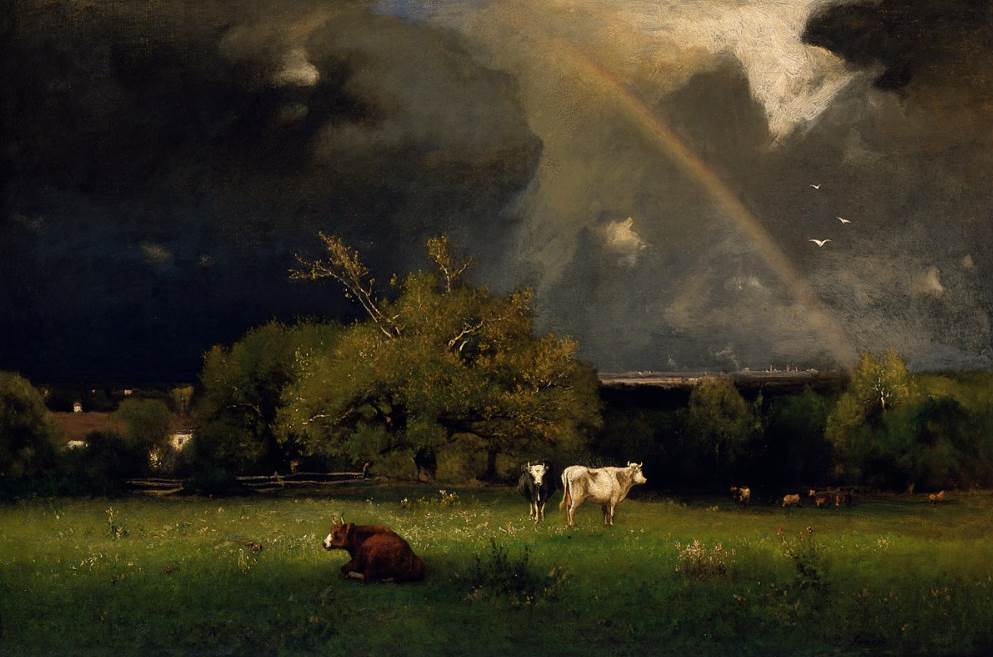
7. Enclosed Field with Peasant – Vincent van Gogh
- Date created: 1889
- Dimensions: 74 × 92.1 centimeters (29 × 36.25 inches)
Enclosed Field with Peasant is one of the hundreds of enthralling paintings by Vincent van Gogh (1853-1890), the Post-Impressionist master who developed a unique style. As you can see, the thick brushstrokes flow together to form a vibrating work of art.
The painting was completed while the troubled artist was living in the asylum at Saint-Rémy-de-Provence following his mental breakdown in Arles. It depicts a field near this hospital and the artist considered it to be a pendant to another work he produced earlier titled “The Reaper.” This painting is part of the collection of the Kröller-Müller Museum in Otterlo, Netherlands.
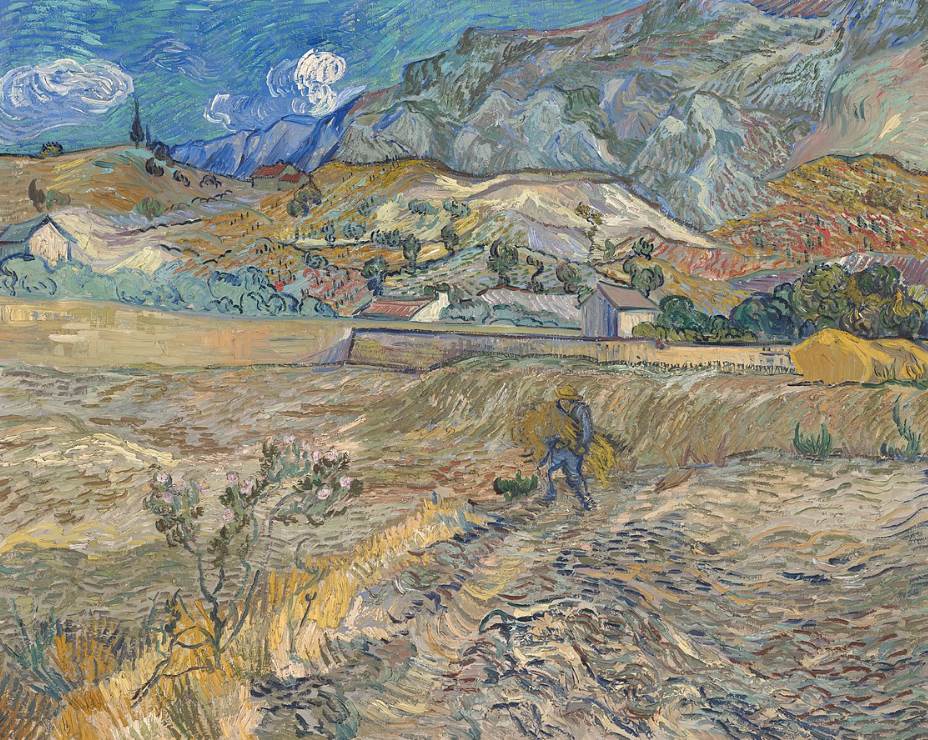
8. Charing Cross Bridge – Claude Monet
- Date created: 1900
- Dimensions: 66 x 92.7 centimeters (25.9 x 36.4 inches)
Charing Cross Bridge is the title of a series of paintings by Monet, the Impressionist artist who is considered to be the founding father of the Impressionist art movement. Charing Cross Bridge is also known as the “Hungerford Bridge” and lies between Waterloo Bridge and Westminster Bridge in Central London.
Claude Monet (1840-1926) visited London for the first time when he exiled himself and his family to flee the Franco-Prussian War in 1870. He later returned and produced a series of 37 paintings depicting this bridge, most of which depict a very hazy view of the bridge in London.
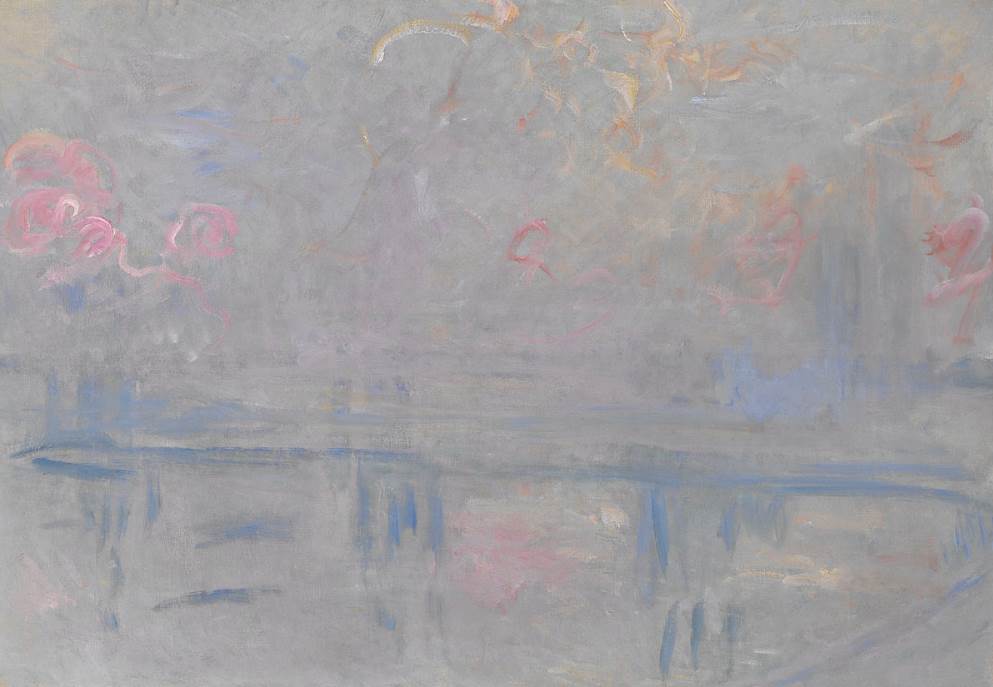
9. Ma Jolie – Pablo Picasso
- Date created: 1913-1914
- Dimensions: 53.66 × 65.09 centimeters (21.12 × 25.62 inches)
Ma Jolie is a puzzling painting by Picasso (1881-1973), the Spanish artist who was one of the leading artists of the Cubism art movement in the early 20th century. Cubist paintings reshaped the course of art history as they went against every traditional standard of painting.
This work depicts common objects which are broken up and reassembled quite remarkably. Pablo Picasso (1881-1973) already completed a painting of the same name 2 years earlier in 1912 and that painting is part of the collection of the MoMA in New York City.
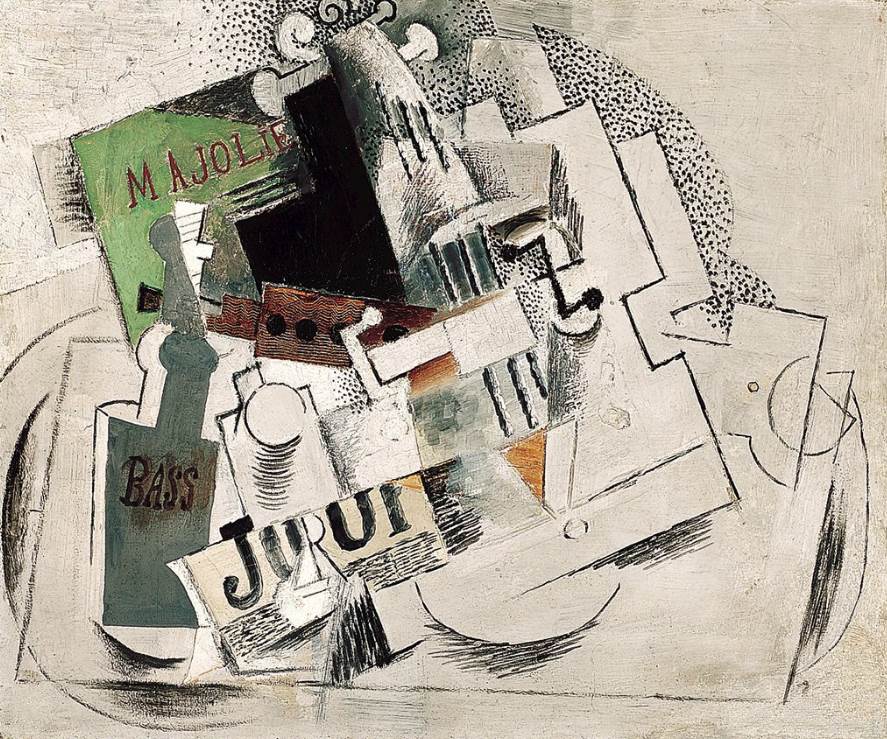
10. Hotel Lobby – Edward Hopper
- Date created: 1943
- Dimensions: 81.9 × 103.5 centimeters (32.2 x 40.7 inches)
Hotel Lobby is one of the signature paintings by Edward Hopper (1882-1967), the American Realism painter who produced some of the most iconic paintings in American history. It depicts an ordinary scene of a man and two women who are waiting in a hotel lobby.
The recurring motive of Hopper’s paintings was loneliness and isolation. Hopper and his wife Jo traveled frequently and the man and woman on the left may be portraits of both of them in their sixties. Hopper produced one more painting featuring a hotel titled Hotel Window (1955).
